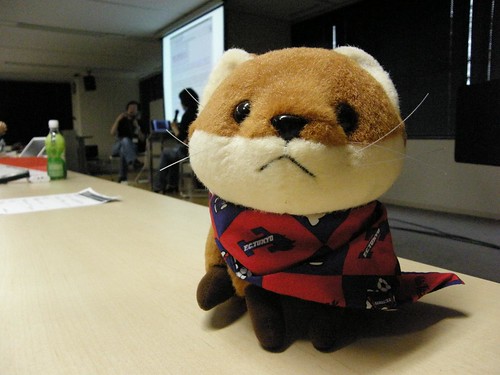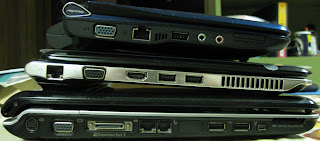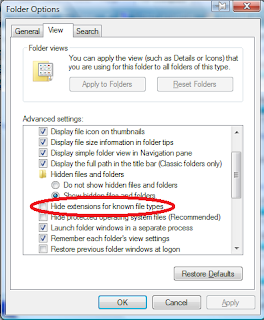Note: This post contains significant spoilers for the new Star Trek film. Do not read it if you have not seen the movie and don't want to be spoiled.Like a lot nerds, I saw the new Star Trek movie today. It was a watershed moment for the Trek franchise, rebooting forty years of television history. Having grown up on Star Trek, I found myself half eager and half dreading this film. I am not going to review this film as an impartial critic. I'm reviewing it as an abashed fanboy.
I got hooked on reruns of the original series when I was six. They are among my first memories. So it's hard for me to view Star Trek objectively. I watched the Star Trek movies but had to admit that even the best of them were often deeply flawed. I resisted Star Trek: The Next Generation when it first debuted but as the series improved I grew to embrace it as a worthy, albeit stuffy sequel to the original. I was more accepting of Deep Space 9 which I now regard as the best of the Star Trek spin-offs, a show which in many ways surpassed the original by testing Gene Roddenberry's original vision for the show in a setting which was far removed from the perfect paradise which he hoped Earth would evolve into.
And then the decline began. While I was hopeful for Star Trek: Voyager and gave it year after year to improve only to see year after year of abject mediocrity. Star Trek: Enterprise was much the same story except for the final season which saw some real improvement capped off by series finale which felt like a middle finger aimed straight at the faces the fans. The movies weren't much better with only First Contact standing out as a good film when the Next Generation crew took over the franchise from the original series players.
And that brings me J.J. Abrams' Star Trek. I've always seen his television work as hit and miss. I hated Felicity and never especially liked Alias even though I would dutifully give it a chance every season only to quickly get bored and tune out. On the other hand, I love Lost so I was hopeful that Abrams might be the man to rejuvenate Star Trek. And for at least this movie, that was exactly what has happened.
This new Star Trek movie isn't anything particularly deep. It is a rather straightforward rebooting of the franchise, wiping away the forty years of baggage that it has accumulated, and creating a new canvas. It's also a non-stop unapologetic thrill ride, using the plot to move smoothly along from one action set piece to the next with surprising efficiency.
The story begins with the starship USS Kelvin investigating what appears to be a thunderstorm in space. An enormous Romulan ship emerges from that storm and attacks the Kelvin. The Romulan commander demands that the captain come to his ship to negotiate a surrender. The captain puts his XO, George Kirk in charge. The Romulan Commander demands that Ambassador Spock be handed over to him. The captain has no idea who Ambassador Spock is and is murdered by the Romulan Commander. The Romulan ship attacks again. Kirk evacuates the ship and holds the off the Romulan ship as the crew, which includes his pregnant wife (who just happens to be in labor), escapes on shuttles. One of the last things Kirk hears before the Kelvin rams the alien ship and is destroyed is the birth of his son, James Tiberius Kirk.
We next see Jim Kirk in Iowa as a juvenile delinquent joyriding in his uncle's classic car which he sends off a cliff as he's being chased by a cop on a hover bike. On Vulcan, we see a very young Spock being taunted by Vulcan boys for being half-human. The stoic little boy is able to resist their taunts until they begin to talk about his mother which sets him off. As we see him grow, Spock emerges as a brilliant youngster who is accepted into the Vulcan Science Academy but elects to join Starfleet Academy instead. He does this in part because of the barely concealed contempt for his human side that he sees even in the Vulcan elders who accept him into the Vulcan Science Academy.
It makes for an interesting contrast, the stories of young Kirk and Spock. While Spock grows up pretty much as were told in the original series, Jim Kirk's childhood is a pretty major departure from the original series. We don't see a grim, focused "stack of books with legs" cadet in this movie. Instead we see a cocky bastard and juvenile delinquent who seduces girls (OK, Kirk did that a lot in the original series too) and starts bar brawls. It's only the influence of Captain Pike, who served with Kirk's father on the Kelvin and who makes a point to recruit Jim Kirk into Starfleet.
One consistency between the original series and this movie is Jim Kirk cheats on the Kobayashi Maru test re-programming the simulation so that it's possible to save the ship. In the movie it leads to tension with the young commander Spock as he's the one who originally programmed the Kobayashi Maru. As a committee meets to decide whether to punish Kirk for cheating, a distress signal comes from the planet Vulcan and all the senior cadets are sent to man the newly launched starships Enterprise and Farragut. Although Kirk is banned from going because of his academic suspension his friend, a young Bones McCoy, gives him a large dose of vaccine to simulate illness and uses as an excuse to take him along on the Enterprise. It's also an excuse for some extended comic relief as Kirk develops a severe allergic reaction.
There is also some more comic relief as a young Hikaru Sulu, excited by his first posting on a starship accidentally disables the Enterprise's warp drive. This is something of a contrivance as it allows the Enterprise to survive as no one realizes yet that the Vulcan distress signal is due to an attacking Romulan ship and not a natural disaster. So while seven other Federation ships are destroyed, Kirk has time figure out based on reports coming in from those ships that sound like what the crew of the Kelvin saw twenty-five years earlier before the Romulan attack. This feels rather contrived as you'd expect Captain Pike, who was an adult member of the Kelvin's rather than a fetus in the process of being born, to better remember the events of that day. Of course Kirk also has the advantage of having overheard a conversation between a young Uhura and her room mate (naturally, he was hiding under said room mate's bed after having slept with her) where she explains that she has just decoded a strange Romulan transmission. Kirk is able to put two and two together and figure out what is happening before anyone else. Which still feels very contrived.
But the plot must go on and we see the enormous Romulan ship drilling into the core of the planet Vulcan. They are about to dispatch the Enterprise when Nero, the Romulan Commander, notices ship's name and demands to see the captain. He also takes a moment to taunt Mr. Spock. It seems that Nero is from the future and has been waiting for twenty-five years to find Mr. Spock. Captain Pike puts Spock in command and is impressed enough by Kirk's quick thinking to make him XO. Because the Romulan ship's drilling platform is also jamming the ship's transporter, Pike boards a shuttlecraft with Kirk, Sulu, and a redshirt (a red jumpsuit actually but still one of many little callbacks to the original series which pepper this movie). The latter three must parachute from the shuttle and disable the drill while Pike tries to negotiate with Nero.
It all leads to a fairly thrilling but contrived scene where Kirk and Sulu must parachute onto the drilling platform (the red jumpsuit guy's parachute fails and he is incinerated by the drilling platform's randomly firing laser). It's a fast paced scene and it has to be because it is so contrived. Sulu remembers to bring a collapsible sword to fight and the crews lose their disrupter rifles when Kirk and Sulu attack which forces them to fight hand to hand. But the rifles remain on the platform instead of falling off the tiny platform because the guy who brought the explosives has been incinerated and Kirk and Sulu need the rifles to destroy the platform. They then fall together with the platform and are beamed up (Kirk's parachute fails and Sulu's was shredded when the landed on the platform) seconds before they hit the ground.
But this big, flashy action set piece is all for naught as the drilling platform has already successfully dug all the way to the planet's core. The Romulan ship deploys its main weapon, "Red Matter," a substance which can collapse to form a black hole which sinks to the planet's core and swallows it up. Vulcan will be destroyed in minutes. Spock beams down to rescue the Vulcan elders -- and his parents. He does rescue his father and the elders but his mother falls off a cliff and dies as he watches helplessly from the transporter beam.
The next scene on the Enterprise bridge is a mixture of exposition and confrontation. Because of the Romulan ship's technology and hot black hole on planetary core action, Spock believes that it is from the future and has created a new timeline. This is what the movie has been building to all along, the big reboot. Nero's actions have created a new timeline which justifies this reboot of the entire Star Trek franchise. Spock wants to return to the fleet for instructions and Kirk wants to follow Nero's ship and rescue Captain Pike. Things get tense enough that Spock has Kirk thrown off the ship and onto what appears to be an icy moon of Vulcan.
There he is attacked by a huge, hungry alien monster which is killed by an even huger, hungry alien monster which goes after Kirk. (Question: Why would the huger, hungry monster throw away the huge monster and go after Kirk? After all, if it's hungry wouldn't it be better to just eat the bigger meal?) Again, another contrived scene which moves fast enough so that you don't really think about it. More importantly it is a chance for Kirk to meet and be rescued by the original Mr. Spock, Leonard Nimoy, who explains Nero's motivation.
It seems that 129 years in the future and the entire galaxy is threatened by a supernova. One of the first planets that will be demolished by it will be Romulus, the Romulan home world. Ambassador Spock proposes to help by using Red Matter to create a black hole while will implode the star and stop if from exploding. (Roger Ebert in his
review of Star Trek complained about Trek's unrealistic science and scenes like this really underline his point. Would it have killed the Abrams and his writers to do a little homework and make the science a little more realistic? Most people wouldn't notice but for a few geeks like myself, this would have been greatly appreciated.) But Spock's ship fails to deploy the Red Matter in time and Romulus is destroyed. Worse yet, Spock and Nero's ships are caught up in the wake of the black hole created by the Red Matter and sent back in time. They arrive in the past 25 years apart. Nero destroys the Kelvin and changes the timeline and waits for 25 years so he can capture Spock's ship and maroon him on the Vulcan moon so he can watch Nero destroy Vulcan.
Kirk and Old Spock catch a break as there is a Federation outpost on this moon which is manned by a young Montgomery Scott. Spock explains to Scotty that he will someday invent a way to transport onto distant ships moving at warp speed and in a callback to Star Trek VI: The Voyage Home (where Scotty meets the inventor of transparent aluminum and shows him the formula for making it) shows him the formula for doing so. He coaches Kirk in how to convince Spock that he is to emotionally compromised to continue in command and beams him and Scotty onto the Enterprise. More comic relief as Scotty materializes in the ship's cooling tubes and spends several minutes running around soaking wet.
On the bridge Kirk proceeds to antagonize Spock who remains stoic until Kirk brings up his mother. Spock proceeds to almost kill Kirk in a fit of rage that convinces him that he is to emotionally compromised to remain in command. It is all very reminiscent of This Side of Paradise, the original series episode where Spock is infected by mind controlling spores which cause him to and the cure is to bring out violent emotions, so Kirk taunts Spock until he nearly kills him.
Kirk takes command and decides to mount a rescue of Captain Pike. He and Spock beam onto the Romulan ship which looks like the inside of a decaying post-industrial Death Star (J.J. Abrams did say that he was always more of a Star Wars fan). There is a fairly straightforward battle as Kirk fights Romulans and rescues Pike while Spock steals back Old Spock's ship with its cargo of Red Matter which he flies out and uses to attack Nero's ship. He rams the ship into Nero's ship which sets off the Red Matter to create another black hole. Kirk, Pike, and Spock are all beamed out by the Enterprise and offer to help save Nero's ship. Nero refuses and his ship is engulfed by the black hole as the Enterprise makes a thrilling escape. There are a couple more scenes as Kirk is promoted to captain, taking the place of Pike who is in a wheel chair and has been promoted to admiral and Spock meets with Old Spock in a symbolic changing of the guard between the old cast and the new cast of Star Trek.
Overall, this was a very enjoyable movie. While I criticize it at times during this review, most of my problems with the movie didn't get in the way of my enjoyment, so it's all good for me. The new cast for the most part does a nice job of capturing and reinterpreting the original series characters. The only exception is Chekhov who is more of a parody of his original series character with a nearly impenetrable Russian accent. Sulu is a nice update of the original character whom we were always told was a good officer but who never had a chance to show it. Here he is able to fight and be a swashbuckler nicely even if he also does a few dumb things at times. Bones is a fairly good update as well, younger and more bitter than the original series model but at least we get a hilarious explanation of his nickname -- his ex-wife took everything but his bones in the divorce. Scotty is mostly a silly comic relief character here, it will be interesting to see if he gets more to do in future movies. Uhura is something of a revelation in this movie: smart, funny, and getting more to do than her original series character and sharing several steamy scenes with, of all people, Spock.
J.J. Abrams took great pains to assure people that casual viewers would be able to follow and enjoy this film. To my great relief, I found that rabid, life long Trekkies can enjoy it too.
 Boing Boing Gadgets links to a Washingpost blog which complains about Microsoft quietly installing a Firefox extension without permission. This isn't the first time that this has happened. While I like AVG Antivirus, they have been installing their own Firefox extension for quite some time. As with Microsoft, they do this without permission, probably on the idea that they are doing it for the user's own good. But this is a troubling trend. One of the reasons that I use Firefox in the first place—indeed the reason most people probably use Firefox—is because of the degree of customizability and control that is allows. When companies decide that they can install extensions on their users computers willy-nilly, that is a bad thing. They are essentially telling their users, "We know better what's good for you." It erodes trust and quite frankly I'm not even sure that it is legal. Firefox afterall is made by an independent company, they are not owned by Microsoft or by AVG Technologies. So my question is, aren't these companies acting like virus writers when they do this and potentially opening themselves up to a lawsuit? If so, it would probably serve them right.
Boing Boing Gadgets links to a Washingpost blog which complains about Microsoft quietly installing a Firefox extension without permission. This isn't the first time that this has happened. While I like AVG Antivirus, they have been installing their own Firefox extension for quite some time. As with Microsoft, they do this without permission, probably on the idea that they are doing it for the user's own good. But this is a troubling trend. One of the reasons that I use Firefox in the first place—indeed the reason most people probably use Firefox—is because of the degree of customizability and control that is allows. When companies decide that they can install extensions on their users computers willy-nilly, that is a bad thing. They are essentially telling their users, "We know better what's good for you." It erodes trust and quite frankly I'm not even sure that it is legal. Firefox afterall is made by an independent company, they are not owned by Microsoft or by AVG Technologies. So my question is, aren't these companies acting like virus writers when they do this and potentially opening themselves up to a lawsuit? If so, it would probably serve them right.
![Reblog this post [with Zemanta]](http://img.zemanta.com/reblog_e.png?x-id=b17e7c25-2acc-4798-aecb-52de836b0972)

 Crunchgear
Crunchgear 
















![Reblog this post [with Zemanta]](http://img.zemanta.com/reblog_e.png?x-id=750c6cac-5050-49d7-ae2a-c7b7c97c6cbe)







![Reblog this post [with Zemanta]](http://img.zemanta.com/reblog_e.png?x-id=fe28fe7b-0a5f-447a-8900-9eeb941b4e1d)
 CNET has a
CNET has a 











